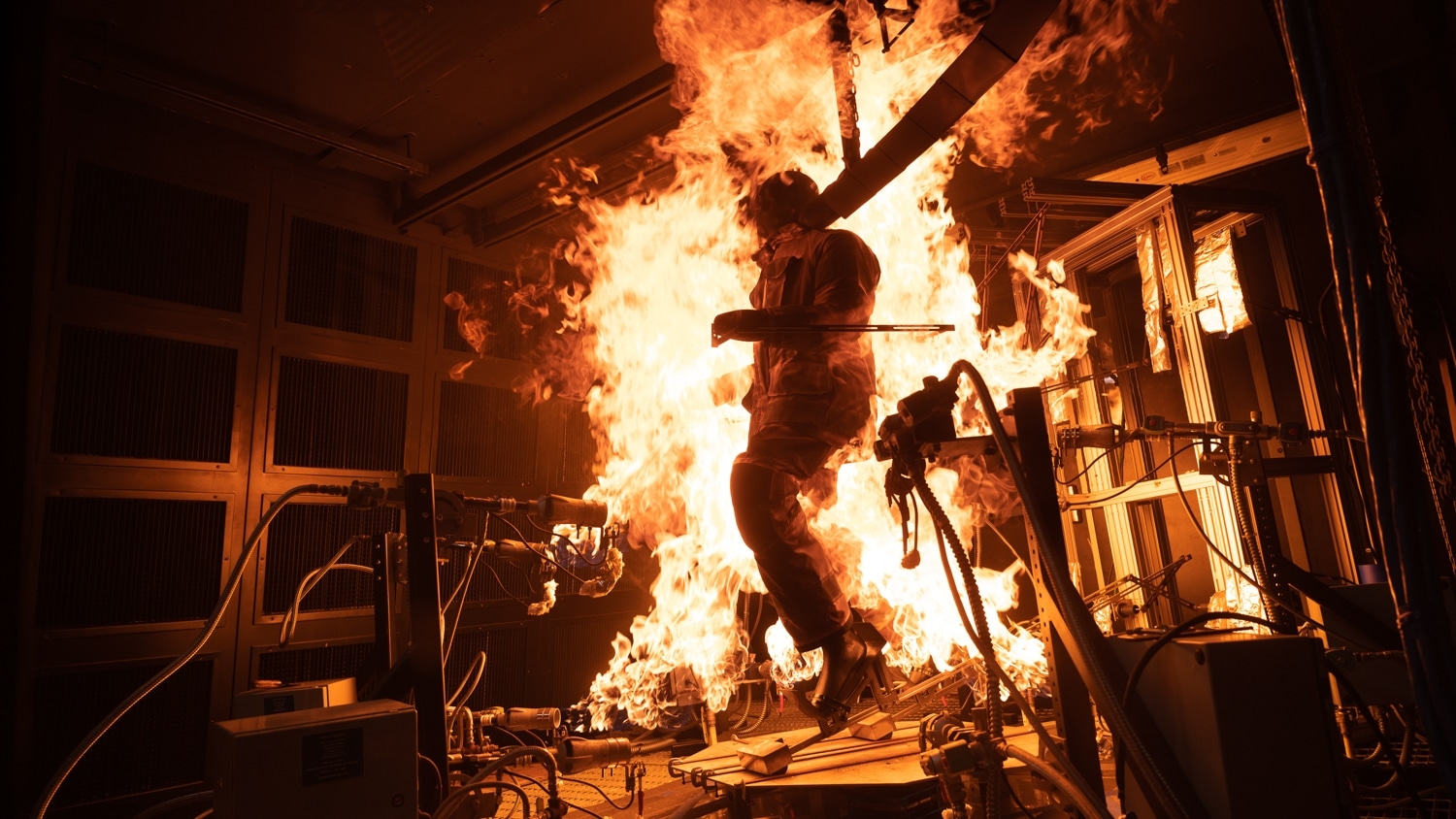Engineering Better Health

A biomedical engineer brings a personal passion for tackling the aging process and injured joints.
This is the burning question that has motivated Jason Franz since he was an undergraduate: Can we engineer better health?
In his youth, Franz was close to his grandfather and spent summers with him on Maryland’s Eastern Shore. Over time, he saw a once physically strong and capable man become frail, walk more slowly and have difficulty getting up from a chair.
“It wasn’t because he was diagnosed with a disease, he was simply getting older,” Franz said. “It struck me that we, as engineers, could innovate and do better by older members of our community and target our engineering solutions to meet their needs.”
This led Franz to a career focused on biomedical engineering — a field that unites medicine and engineering to improve lives and solve public health challenges.
Franz is now an associate professor and the well-being director in theLampe Joint Department of Biomedical Engineering. BME is an interdisciplinary, inter-university department that links the UNC-Chapel Hill College of Arts and Sciences, UNC School of Medicine and NC State University College of Engineering. As the well-being director, Franz is tasked with fostering community, wellness, resilience, self-care and enhancing career and learning opportunities.

Focusing on frailty
Franz directs the Applied Biomechanics Laboratory in BME, and its mission is to engineer solutions to help people age gracefully. “We want our discoveries, and every question we ask, to help older members of our community,” Franz said.
The American population is aging fast — the number of people aged 65 or older is expected to double by 2040, according to the U.S. Census Bureau. “These concerns about aging and frailty are just getting bigger and more important to address,” Franz said.
One of the research priorities of the laboratory is the use of assistive technologies, such as wearable exoskeletons, to help people walk.
Another is the prevention of accidental falls through monitoring for instabilities in muscular or sensory function.
“We look ‘under the hood’ and evaluate sensory or motor capabilities that affect individual joints or the whole body through 3D motion capture,” Franz said. Most of the lab’s work in this area moves beyond evaluating a person’s balance when they are in a standing position to focusing more on walking and daily activities, which is when most falls happen.
Franz’s research on accidental falls seeks to understand balance and what affects it. This includes devising ways to improve people’s balance and developing new ways to screen for and identify people at risk of falling.
“We are using machine learning and artificial intelligence trained on all of the data to inform wearable sensor systems that could move our work from the lab to the community,” Franz said.
Commercial spin-off
Franz’s lab is also trying to understand what drives joint degeneration. This includes exploring how to improve cartilage health by optimizing loading or weight born by a joint.
Franz said the field of rehabilitation engineering is increasingly moving toward the lived experience of older community members in a holistic sense. A recent $3 million National Institutes of Health grant will help his lab explore joint health after surgery or an injury to prevent the onset and progression of knee osteoarthritis.
The research into joint degeneration has inspired Durham-based tech startup company VETTA Solutions, co-founded with Brian Pietrosimone, professor of exercise and sport science. A $50,000 grant from UNC KickStart Venture Services, plus funding from other state grants, has helped Franz build the case for their focus on osteoarthritis.
“If you think of older people in the community, they are not just suffering from walking ability limitations,” Franz said. “Or just the consequences of osteoarthritis pain or the risk of falls. They are dealing with all these things, all at once.”
This article, written by T. DeLene Beeland, originally appeared in the Spring 2025 issue of Carolina Arts and Sciences Magazine and can be read here.
This post was originally published in the Lampe Joint Department of Biomedical Engineering.
- Categories:


